*This post may have affiliate links, which means I may receive commissions if you choose to purchase through links I provide (at no extra cost to you). As an Amazon Associate, I earn from qualifying purchases. Please read my disclaimer for additional details.
Exterior shutters are one of the many things people will see when they observe your house from outside. In essence, exterior shutters play a part in determining the appearance of your home. But beyond that, exterior shutters can serve as a layer of security against intruders and harsh weather.
In this post, we discuss various types of exterior shutters and different types of exterior shutter materials. We also talk about functional and decorative shutters. Read on for more information.
Table of Contents
9 Types of Exterior Shutters
The following are the types of exterior shutters:
1. Louvered
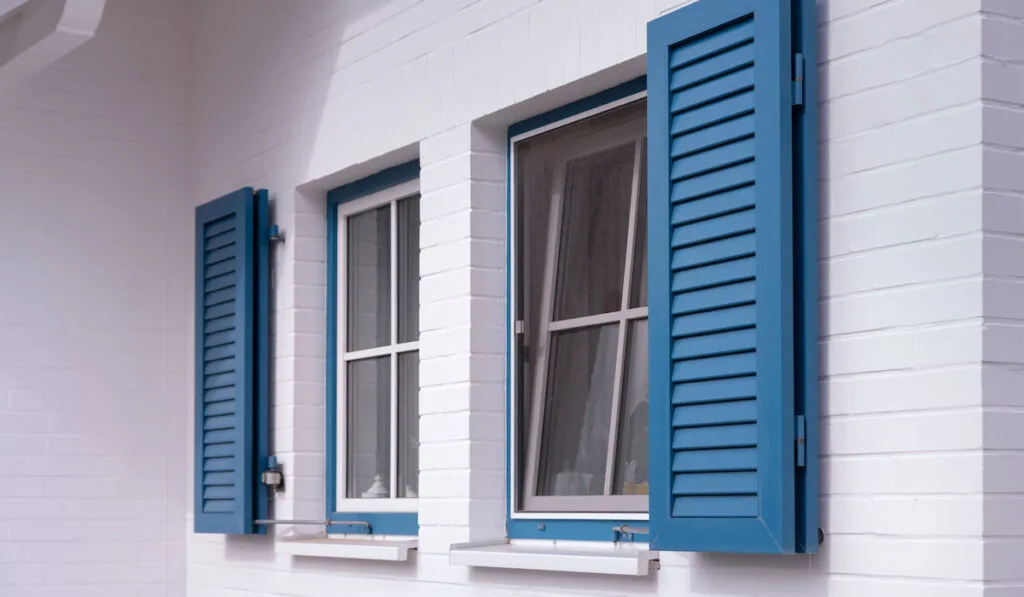
Louvered shutters are made with identical wooden slats arranged and set in a wooden frame. The slats are placed above one another, leaving space between. This space allows the entry of air and light.
Louvered shutters have a sharp look. They are suitable for various architectural designs, including Spanish, ranch, Italianate, Georgian, Greek Revival, Cape Cod, and Victorian homes.
Louvered shutters may also be used in Colonial and Federal-style designs. But in such cases, they are best installed on the second floor.
Louvered shutters are usually installed by attaching them to the side of the window. They may either be painted or stained, depending on what you want.
2. Raised Panel
Raised Panel shutters are like panel doors, hence, the name. They bring to mind the look of kitchen cabinets, and they may either have single or double-raised panels.
Raised panel shutters create a country-style kind of look when installed on windows. But even at that, the general outlook is still formal.
Raised panel shutters are simple, and this makes them an ideal option for many architectural styles. You may use them for Georgian, Victorian, French Country, ranch, and Greek Revival homes.
You may also use raised panel shutters on Colonial and Federal-style homes. In both cases, raised panel shutters are great on the first floor.
3. Bahama
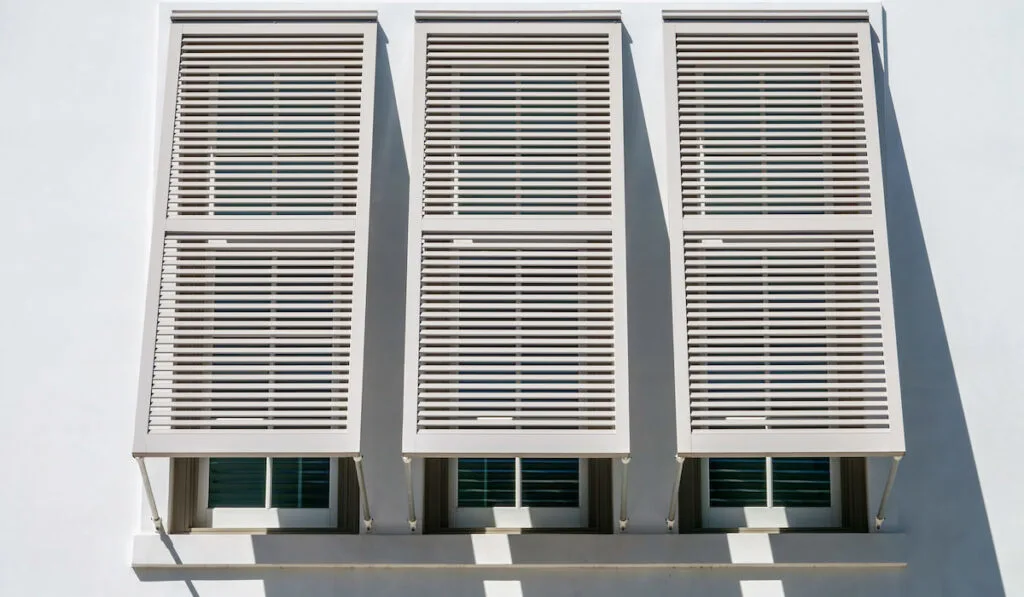
Bahama shutters are a type of louvered shutter. However, they differ in the point of attachment. Instead of being attached to the side, they are affixed to the top of the window.
Bahama shutters were made for tropical areas, and they are typically used in these places. They help to block out wind debris and protect the windows from storms.
At the same time, they help to shade rooms while providing protection against sunlight. Bahama shutters also let air in.
Bahama shutters are work well when used with virtually any architectural style. They can be used with Cape Cod, cottage, ranch, and many others.
4. Board and Batten
The board and batten type of shutter features boards and a batten. The construction is such that 1 to 4 boards are bounded with a thin cross panel (the batten).
The batten may be laid horizontally or angularly. This type of shutter is available in various designs, including joined, spaced, square, and archtops.
When using a board and batten shutter taller than 54 inches, using 3 battens is ideal. With 3 battens, you get an even look. This also applies when using board and batten for double-hung windows.
Board and batten shutter may also be called Bnb or B and B. They appear antique and have a country-style appearance owing to their simple design. The minimalism in their design makes them perfect for farmhouse-style and stone or brick-sided homes.
But besides those architectural styles, board and batten shutters may also be used in Spanish, French Country, and ranch-style homes.
5. Combination Shutter
As the name says, combination shutters combine at least 2 other shutter styles.
You may use a louvered shutter with a raised panel shutter. Another option is raised panel, operable louvered, and louvered mix.
You could also try out archtop board & batten alongside cut-out shutter. There is no restriction on the type of combination you can try out.
The upside of combination shutters is that it gives you the chance to customize your own shutter style. It comes in handy when you want something that defines you.
Combination shutters are a good match for Georgian, Colonial, Greek, and ranch-style homes. They also go well with Italianate and Victorian homes.
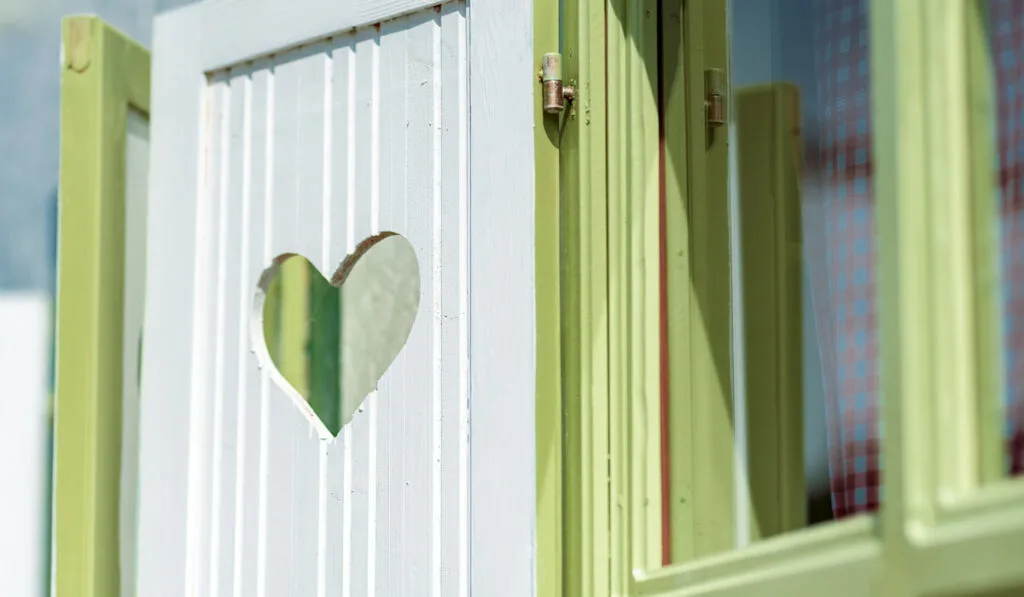
6. Cut-Out Shutter
Any type of shutter can be a cut-out shutter. What makes a cut-out shutter is the presence of a cut-out design on it.
Cut-out shutters are another type of shutter you can use to express yourself and customize your home. There is no restriction on the design you can cut out on your shutter. Be it stars, an anchor, a ship, any letter, or any shape at all.
You can make cut-out shutters of raised panel, combination, and board & batten shutters.
7. Plantation Shutters
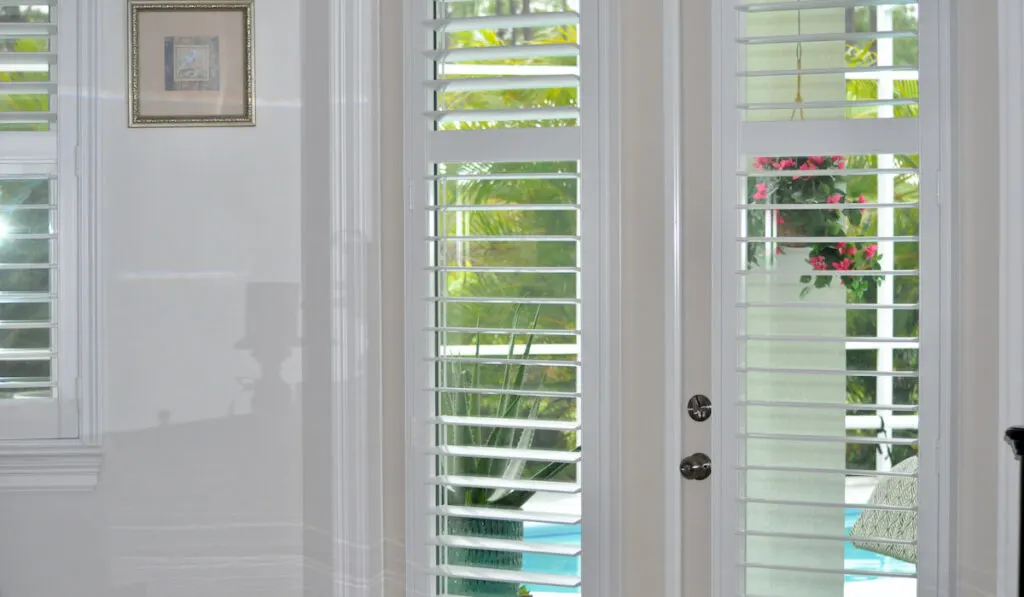
Plantation shutters are a type of louvered shutter. But unlike traditional louver shutters, they have wider louvers. The width of their louvers allows them to offer broader views while letting in more light.
Besides their width, the louvers of plantation shutters may be flat or elliptical. But those in traditional shutters are usually wedge-shaped. Plantation shutters may be made of wood or any artificial material.
But traditional shutters are usually made of wood, which may be painted or stained. Also, plantation shutters are installed inside the window frame. But traditional shutters are fixed by the side of the window.
One advantage of using plantation shutters is their insulative properties. They help maintain warmth in winter. At the same time, they keep the room cool in summer.
Plantation shutters may come with tilted rods with which you can open and close the louvers. With the rods, you can control the amount of light and air that enters the room.
8. Flat Panel
Flat panels may also be called shaker shutters. Unlike raised panel shutters, they come with a smooth or level focal area, and they have no detail.
Flat panel shutters come in handy when you are trying to block out light. It also helps in protecting the room from harsh weather.
The simplicity of flat panel shutters allows them to match virtually all types of architectural styles. However, they are more commonly used with modern and country-cottage homes.
9. Scandinavian Shutter
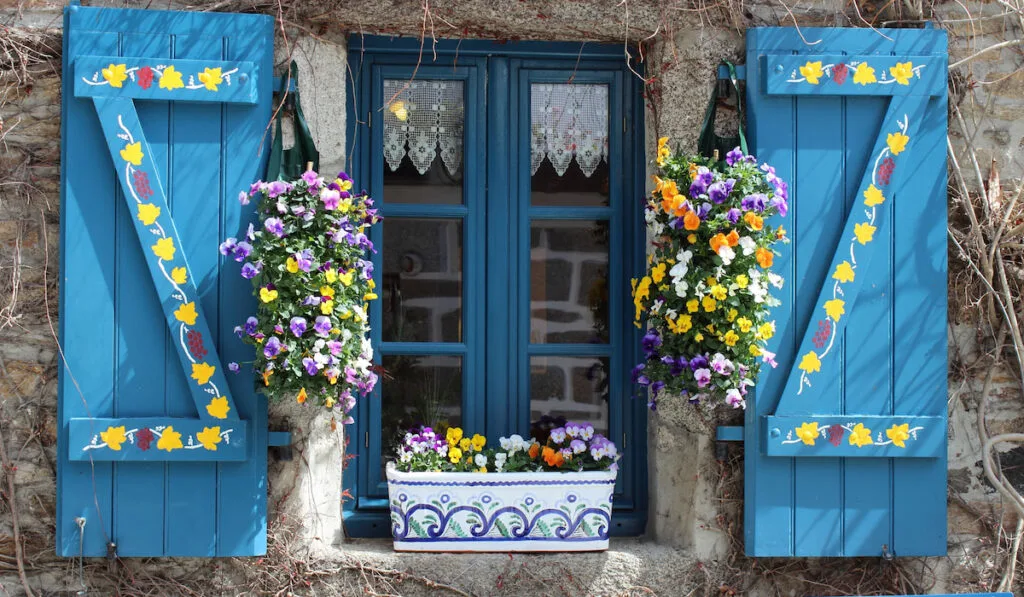
Scandinavian shutters are basically board and batten design. But they differ in that they are enhanced with cut-outs. Scandinavian shutters are also decorated with bright, bold colors, which make them extremely attractive.
Scandinavian shutters come in handy when trying to keep out snowstorms and blizzards. Plus, their bright colors provide some distinction in snowy regions.
Functional or Non-Functional?
Exterior shutters may be functional or decorative (non-functional), depending on how they are built.
Functional Shutters
In the past, shutters were principally for providing protection against intruders and harsh weather. But these days, the presence of glass windowpanes has diminished their necessity. Nonetheless, one can get a functional shutter as an extra layer of protection.
If you are trying to get a functional shutter, accurate measurements are essential for it to function. The height and width must be precise, or when shut, the shutter may not fit into the window frame correctly.
Decorative Shutters
It is as the name says, decorative shutters are for aesthetics. In fact, if installed skillfully, no one would be able to tell they are not functional.
Compared to functional shutters, decorative shutters need little maintenance. Their only function is to enhance the outlook of your house.
With decorative shutters, you do not really have to worry so much about measurements. You may choose to work with accurate measurements or work with your preference.
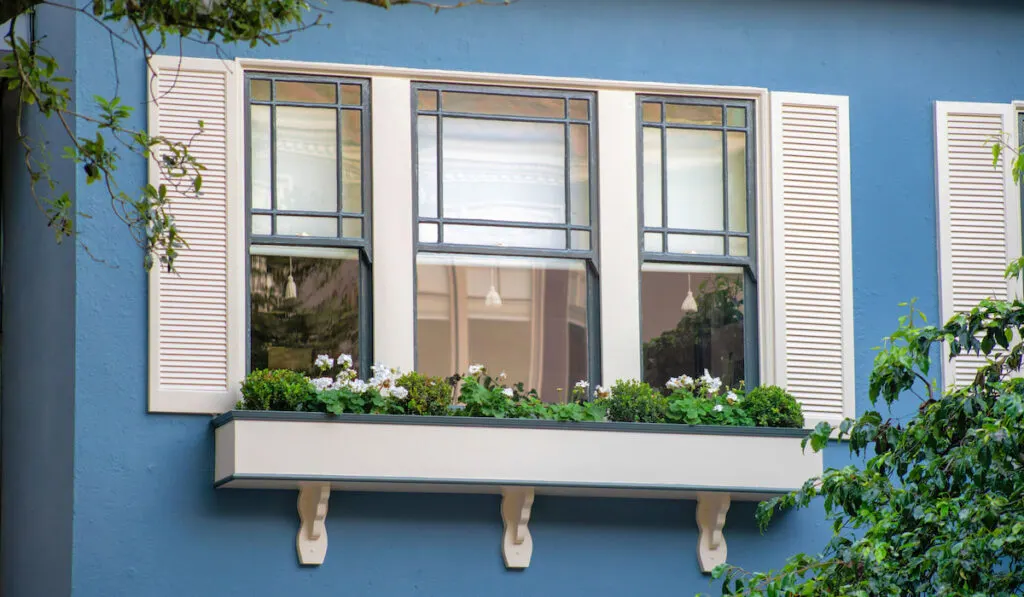
Materials Used in Making Exterior Shutters
The following are some of the materials used in making exterior shutters:
Vinyl
Vinyl is the least expensive material used in making exterior shutters. It is lightweight and relatively durable.
Vinyl is also water-resistant and low maintenance. It offers some resistance against rotting, cracking, and fading.
One drawback of vinyl shutters is that they turn yellow as time passes. Vinyl shutters also become harder to clean as time goes.
Aluminum
Aluminum may also be used in making exterior shutters. One type of shutter that is made from aluminum is the Bahama shutter.
Aluminum shutters are pretty durable, especially when powder-coated. They offer resistance against all climates, and as expected, they are relatively expensive.
Wood
Exterior shutters may also be made from wood. People typically opt for wooden shutters when they want a classic, authentic, and elegant look.
Shutters made from wood are perfect for traditional styles. They are available in their natural state or pre-painted. Those that are natural may be painted or stained to your taste.
The downside of wood shutters is that wood ages with time. So, to keep yours in good form, you have to seal it every year. Of course, that means it requires maintenance, which adds extra cost.
Composite
In place of wood, you may use composite wood, which does not need as much maintenance as wood. Composite wood may also be called faux wood.
Composite wood shutters are ideal for tall spaces because they are stiff and durable. They do not split, rot, crack, warp, or fade. Also, they are cheaper than regular wood and come in various styles, colors, and shapes.
Fiberglass
Exterior shutters may also be made from fiberglass. Fiberglass comes with lasting durability: it resists rot, splits, and cracks. Plus, it needs little to no maintenance.
Fiberglass shutters are perfect for use in areas with high humidity and temperature variations.
Resources
- https://www.diynetwork.com/how-to/rooms-and-spaces/doors-and-windows/four-types-of-exterior-window-shutters
- https://www.bobvila.com/slideshow/shutter-style-9-designs-everyone-should-know-46308
- https://www.wayfair.com/sca/ideas-and-advice/renovation/types-of-exterior-shutters-how-to-choose-the-right-ones-T5250
- https://www.hooksandlattice.com/shutter-buying-guide
- http://www.dynamicgaragedoor.com/10-types-of-shutters-which-ones-are-right-for-your-home/
- https://www.theshutterstore.com/about-us/blog/december-2016/what-are-plantation-shutters
- https://homeguides.sfgate.com/traditional-vs-plantation-shutters-90648.html
- https://sunburstshutters.com/178-how-to-open-and-close-your-plantation-shutters/
- https://www.shutterland.com/exterior-shutters/raised-panel/
